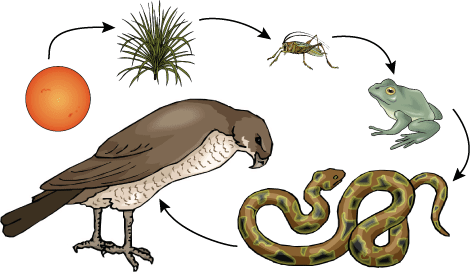Specialized Technical Careers: Hazardous Materials, Pest Control, and Engineering Pathways
Hazardous materials’ removal workers: manage dangerous substances
Hazardous materials removal workers play a critical role in public safety and environmental protection. These professionals specialize in identify, remove, and right dispose of substances that pose risks to human health and the environment.
Core responsibilities and tools
The career of hazardous materials’ removal involve use specialized tools and machinery to safely handle dangerous materials. These workers usually use:
- Personal protective equipment (pPPE)include respirators, hazmat suits, and chemical resistant gloves
- Specialized vacuums with HEPA filtration systems
- Containment barriers and negative air pressure systems
- Chemical neutralizers and decontamination equipment
- Detection and monitoring devices for various hazardous substances
Hazmat removal technicians work in various environments, from industrial settings to residential areas, address substances like asbestos, lead, mold, chemical spills, and radioactive materials. Their work require meticulous attention to safety protocols to prevent contamination and exposure.
Training and certification
Most hazardous materials workers receive extensive on the job training combine with formal education. Federal regulations require specific certifications base on the materials handle:
- Asbestos abatement certification
- Lead abatement certification
- Harper ( (zardous waste operations and emergency response ) )aining
- Dot hazardous materials transportation certification
The occupational safety and health administration (oOSHA)mandate training standards for hazmat workers to ensure both their safety and public protection during removal operations.
Pest control professionals: manage unwanted organisms
Another specialized technical career pathway include pesticide handlers, sprayers, and applicators. These professionals are essential in agricultural, commercial, and residential settings for control unwanted organisms that threaten crops, structures, and human health.
Responsibilities in pest management
Pest control specialists engage in various activities:

Source: careeronestop.org
- Inspect properties to identify pest problems and entry points
- Select appropriate pesticides and application methods
- Calculate precise chemical mixtures base on space dimensions and infestation severity
- Operate specialized spraying equipment and application tools
- Implement integrate pest management (iIPM)strategies
- Educate clients on preventive measures
The work require knowledge of entomology, chemistry, and environmental science, along with technical proficiency in equipment operation.
Specialized equipment and technology
Pest management professionals utilize various tools:
- Backpack sprayers and power sprayers
- Loggers and misters for area wide application
- Dusters for apply powdered pesticides
- Bait stations and traps
- Moisture meters and infrared cameras for detect conditions conducive to pests
- GPS systems for track application areas in agricultural settings
Certification and regulation
The environmental protection agency (eEPA)regulate pesticide application through the federal insecticide, fungicide, and rodenticide act ( (fFIFRA)ost states require:
- Commercial pesticide applicator licensing
- Category specific certifications (structural, agricultural, turf and ornamental, etc. )
- Continue education to maintain license
- Compliance with state and federal regulations regard to restrict use pesticides
These requirements ensure that pesticide handlers apply chemicals safely and efficaciously while minimize environmental impact and non target organism exposure.
Engineering careers: applied geometric concepts
Engineering represent a career field that intemperately incorporate geometric concepts in daily practice. Engineers apply mathematical principles to design, analyze, and solve problems across various specialties.
Geometric applications in engineering disciplines
Different engineering specialties leverage geometric principles in unique ways:
Civil engineering
Civil engineers apply geometric concepts extensively in:
- Structural design use load bear shapes and stress distribution
- Road and highway design incorporate curves, grades, and sight distances
- Survey use triangulation and coordinate geometry
- Hydraulic systems design base on fluid dynamics principles
Mechanical engineering
Mechanical engineers utilize geometry for:
- Machine component design with precise tolerances
- Kinematic analysis of move parts
- Thermal expansion calculations
- Gear and cam design use involute curves and other geometric forms
Aerospace engineering
Aerospace engineers apply advanced geometry in:
- Airfoil design use complex curves and surfaces
- Aerodynamic analysis with computational fluid dynamics
- Spacecraft trajectory planning use orbital mechanics
- Structural analysis of complex three-dimensional forms
Computer aided design and modeling
Modern engineering rely intemperately on computer aid design (cad )software that apply geometric principles through:
- Parametric modeling use geometric constraints
- Finite element analysis divide complex shapes into simpler geometric elements
- 3d modeling with constructive solid geometry operations
- Topological optimization to determine ideal geometric forms
Engineers must understand the underlie geometric principles to efficaciously utilize these powerful software tools and interpret their results.
Engineering education requirements
The path to become an engineer typically include:

Source: justdispose.com
- Bachelor’s degree in engineering with extensive coursework in calculus, analytic geometry, and linear algebra
- Professional engineer (pe )lilicenseor many positions, particularly those affect public safety
- Continue education to stay current with technological advancements
- Specialized certifications relevant to specific engineering disciplines
Common threads: technical precision and problem-solving
While hazardous materials’ removal, pest management, and engineering represent distinct career pathways, they share important commonalities:
Technical knowledge requirements
All three career paths demand specialized technical knowledge:
- Understanding of scientific principles relevant to the field
- Proficiency with specialized tools and equipment
- Ability to read and interpret technical documentation
- Knowledge of relevant regulations and safety standards
Mathematical applications
Each field apply mathematics in practical ways:
- Hazmat workers calculate containment areas and decontamination solutions
- Pest control specialists determine application rates and coverage areas
- Engineers apply advanced mathematical concepts to design and analysis
Problem solve approach
These careers all involve methodical problem solve:
- Assessment of current conditions
- Analysis of potential solutions
- Implementation of technical procedures
- Evaluation of results and adjustments as need
Career outlook and opportunities
Hazardous materials’ removal
The demand for hazardous materials workers remain steady due to:
- Ongoing remediation of exist contaminate sites
- Age infrastructure require asbestos and lead abatement
- Environmental regulations mandate proper handling of hazardous waste
- Disaster response need follow chemical spills or other emergencies
The bureau of labor statistics indicate moderate growth in this field, with opportunities specially strong for those with multiple certifications and specialized experience.
Pest management professionals
The pest control industry continues to evolve with:
- Grow emphasis on integrate pest management approaches
- Increase concern about invasive species
- Development of more targeted, environmentally friendly treatment methods
- Expand urban areas create new pest pressure zones
Opportunities exist in residential services, commercial facilities’ management, agricultural applications, and public health pest control.
Engineering fields
Engineering careers offer diverse opportunities with:
- Strong demand across multiple industries
- Competitive salaries reflect specialized expertise
- Advancement potential through specialization or management tracks
- Opportunities to contribute to significant technological advancements
Certain engineering specialties show specially strong growth, include those relate to renewable energy, sustainable infrastructure, and advanced manufacturing.
Educational pathways and entry points
These technical careers offer various entry points depend on individual goals and circumstances:
Hazardous materials’ removal
- High school diploma or equivalent is typically the minimum requirement
- Apprenticeship programs provide structure on the job training
- Technical certificates in environmental services or hazardous materials handling
- Associate degrees in environmental technology can provide advancement opportunities
Pest management
- Entry level positions oft require a high school diploma and on the job training
- Associate degrees in pest management or related agricultural sciences
- Bachelor’s degrees in entomology or plant science for advanced positions
- State specific licensing requirements must be meet
Engineering
- Bachelor’s degree in engineering is the standard entry requirement
- Master’s degrees for specialized roles or leadership positions
- Ph.D. for research focus engineering careers
- Professional engineer license through examination and experience
Essential skills for success
Careless of the specific technical career path choose, certain skills prove valuable across these fields:
Technical aptitude
- Mechanical reasoning and spatial visualization
- Comfort with tools and equipment operation
- Ability to read and interpret technical drawings and specifications
- Attention to detail in follow procedures
Safety consciousness
- Awareness of potential hazards
- Consistent adherence to safety protocols
- Proper use of personal protective equipment
- Risk assessment capabilities
Problem-solving
- Analytical thinking to diagnose issues
- Creative approaches to technical challenges
- Adaptability when standard procedures require modification
- Persistence in resolve complex problems
Communication
- Clear documentation of work perform
- Effective explanation of technical concepts to non-specialists
- Collaboration with team members and other professionals
- Customer service skills when work with clients or the public
These technical careers — hazardous materials’ removal, pesticide application, and engineering — represent different aspects of apply science and technology. Each offer unique opportunities to solve important problems through the application of specialized knowledge, tools, and techniques. Whether protect public health by remove dangerous substances, manage pest populations that threaten crops and structures, or design new solutions through applied geometry, these professionals make significant contributions to society through their technical expertise.



